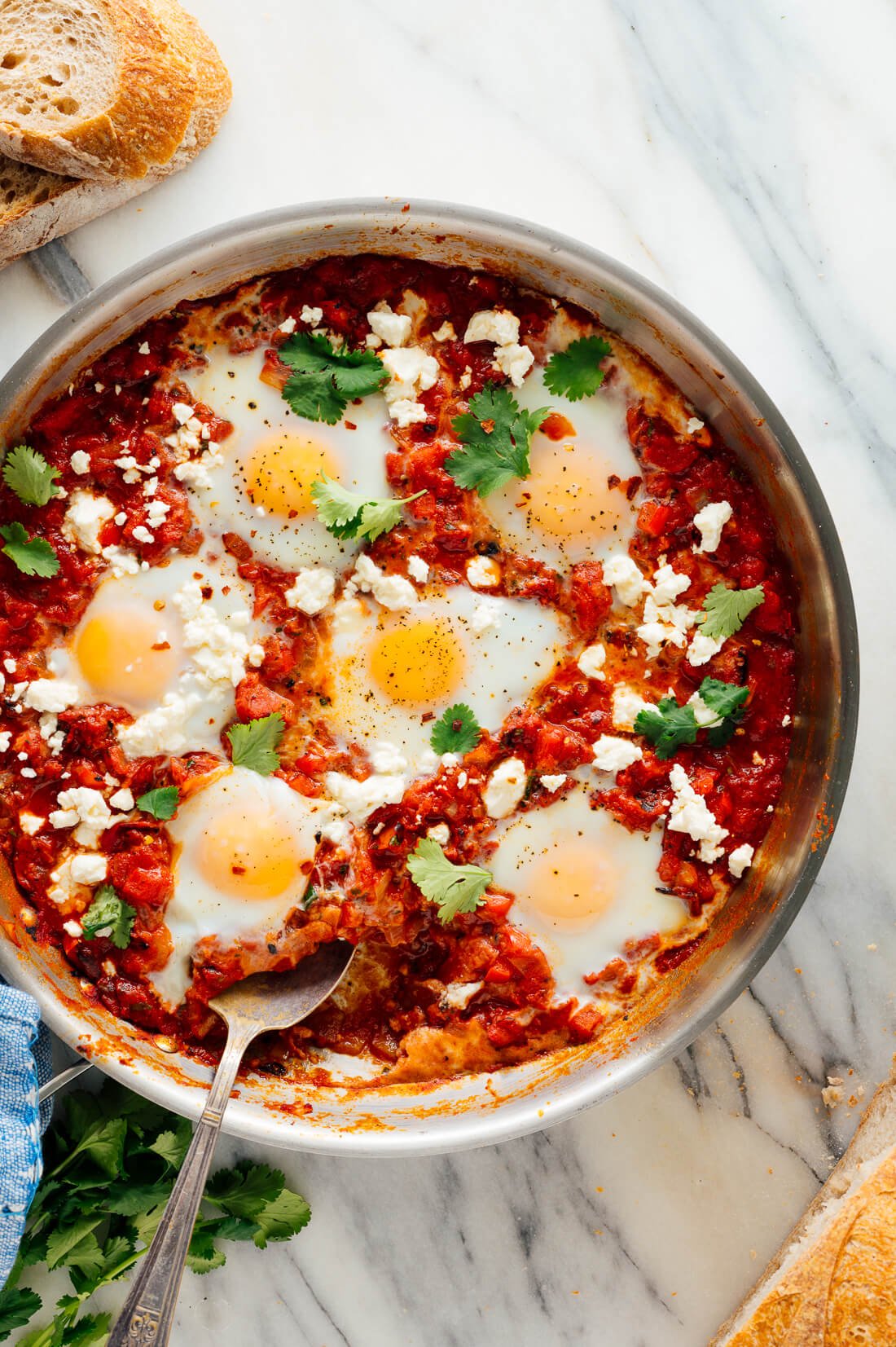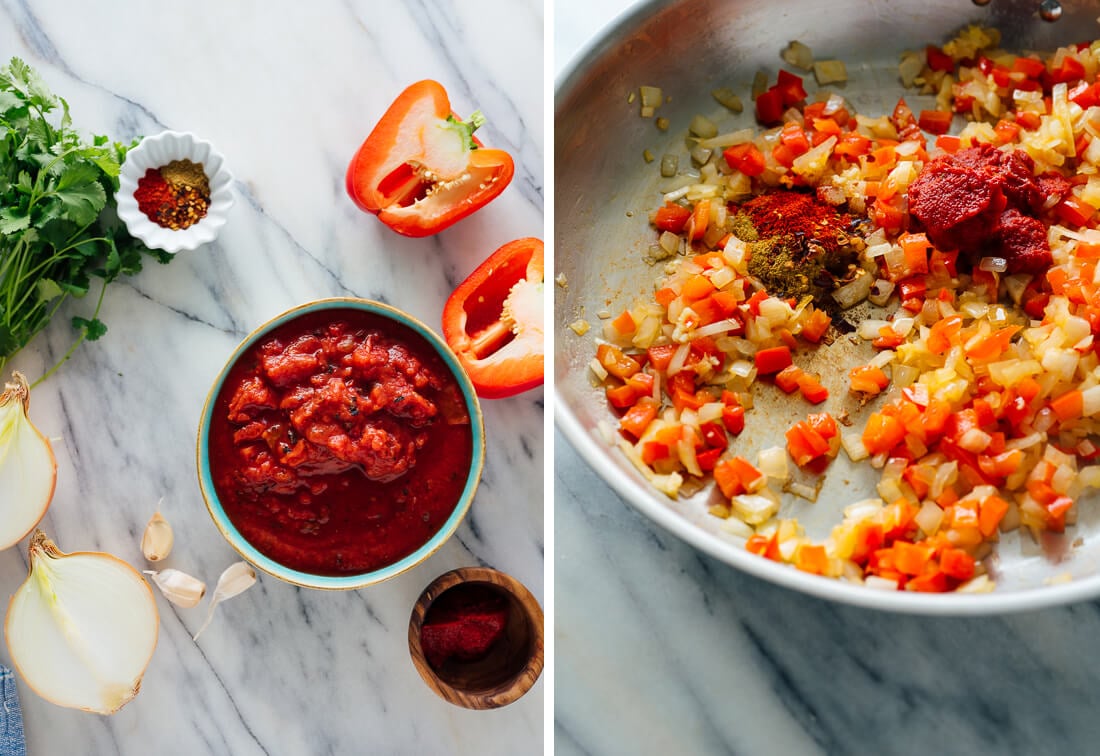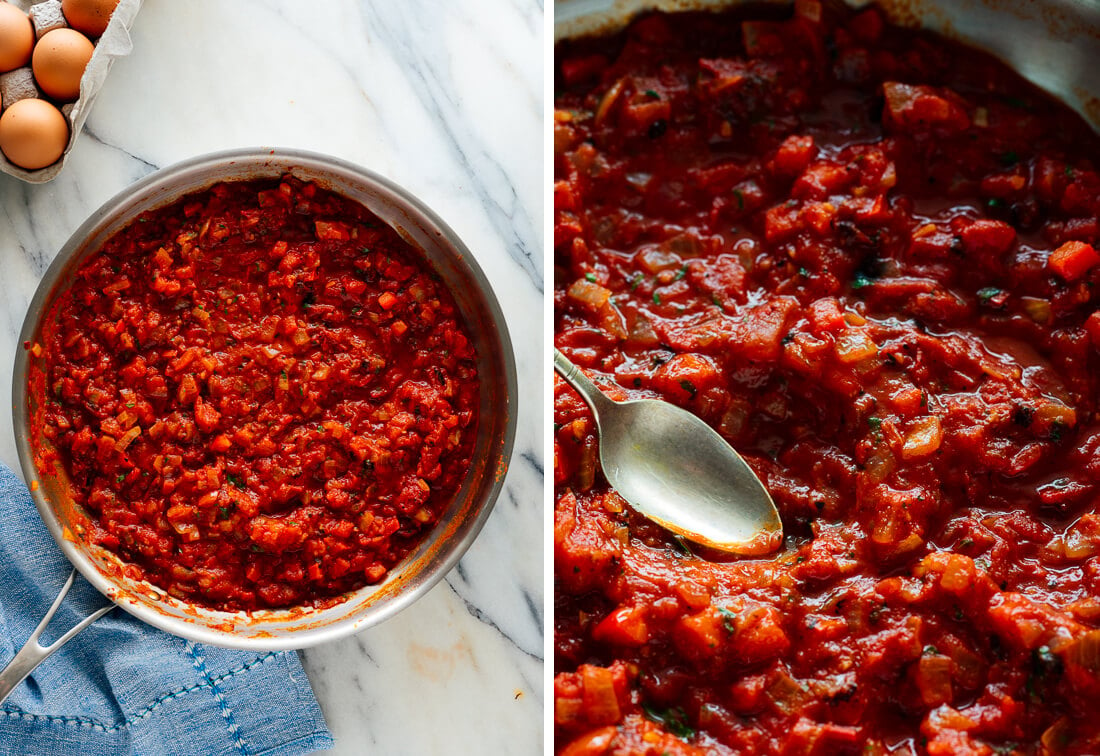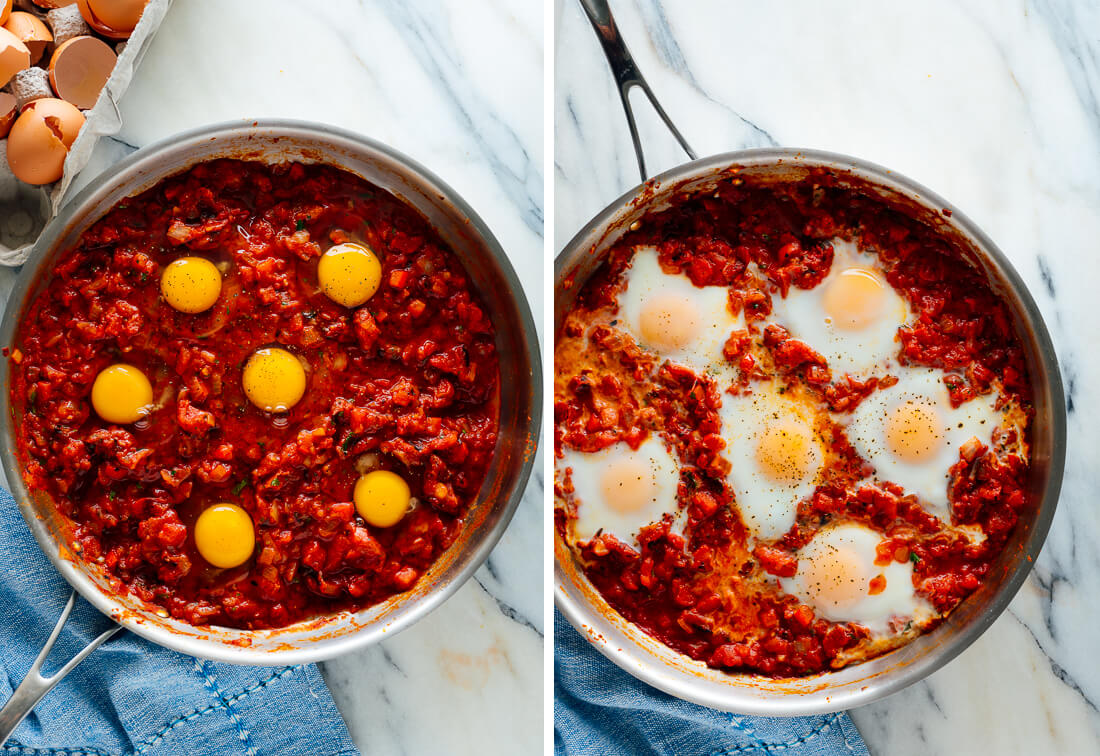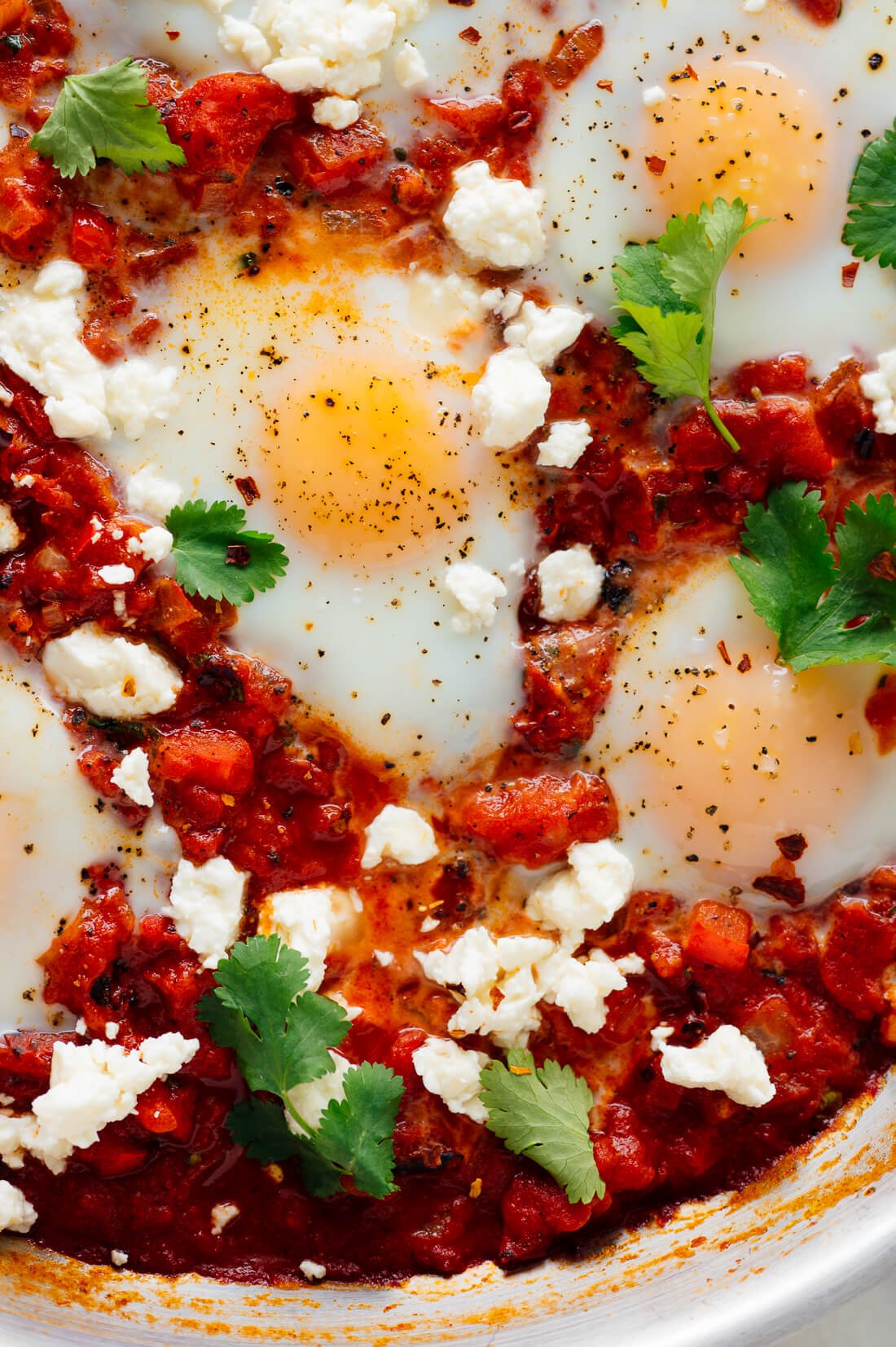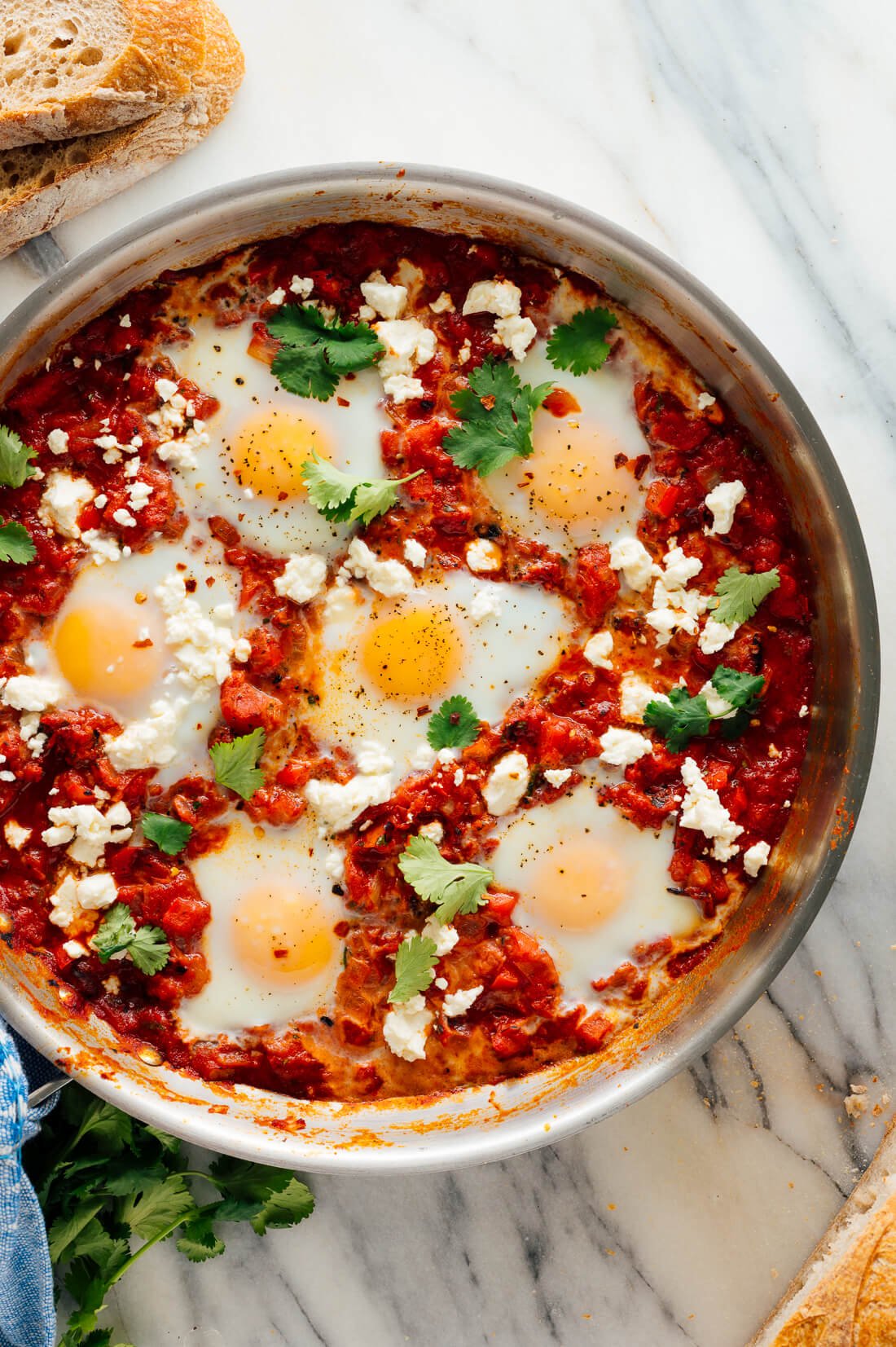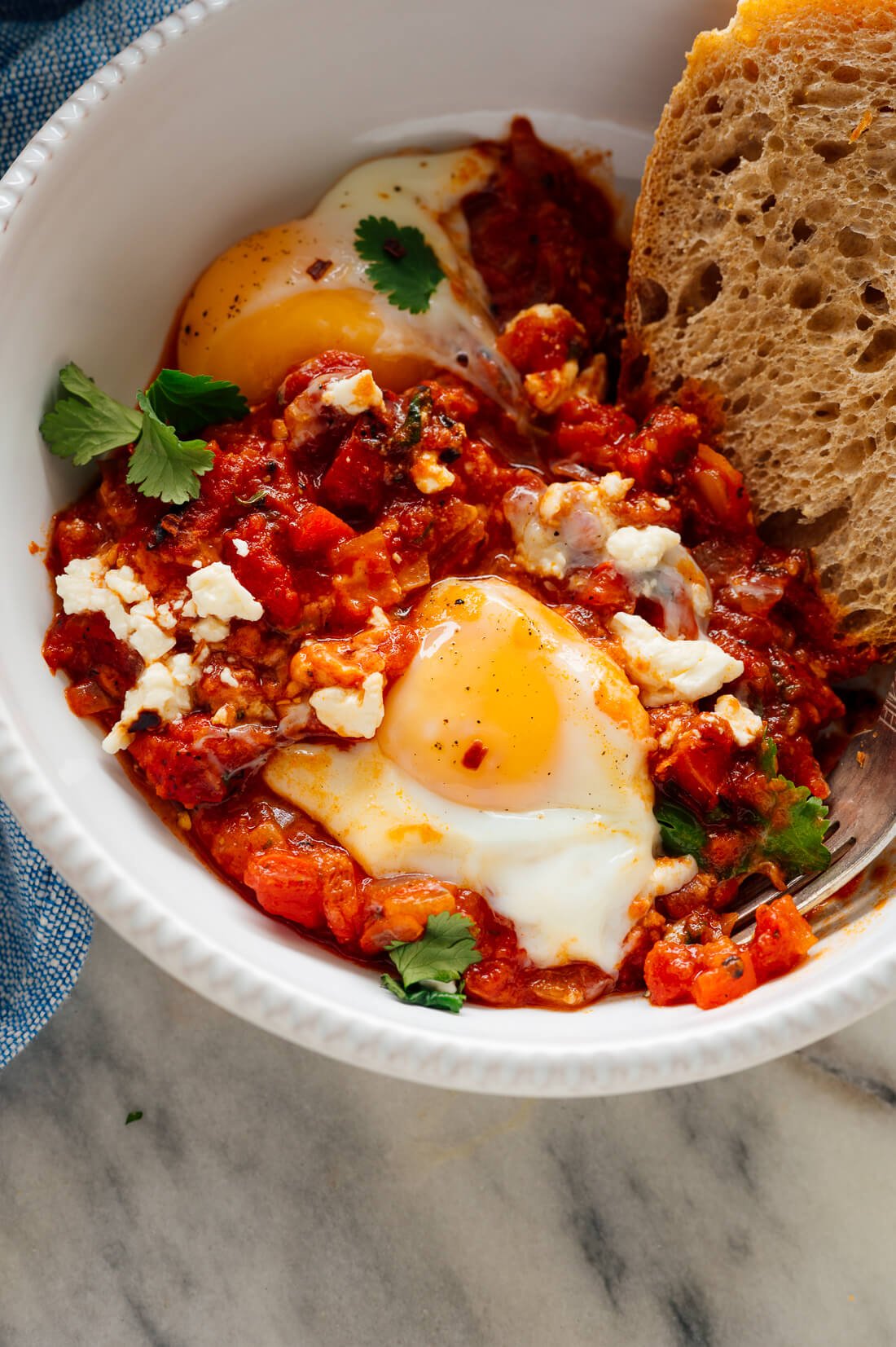Shakshuka! Ever had it? Shakshuka has more than a few things going for it. It’s fun to say, fun to make and fun to eat. The word shakshuka comes from Arabic, meaning, “a haphazard mixture” or “all mixed up.” Shakshuka features poached eggs in a hearty, spiced tomato and pepper sauce. I top mine with tangy feta cheese and fresh cilantro or parsley. Sometimes you’ll find artichoke or olives in shakshuka, but I left those out in this version. The spices vary somewhat as well. I settled on a combination of garlic, cumin and smoked paprika.
Shakshuka is a popular Middle Eastern and North African dish that may date back all the way to the Ottoman Empire. You’ll find it in Libya and Tunisia, and it’s become a staple dish in Israel. If you’ve ever had Italian “eggs in purgatory” or Turkish menemen, the dishes are all quite similar. You can’t go wrong serving shakshuka for breakfast or brunch. It’s also great for lunch and dinner. Shakshuka is a simple one-pan meal that makes a statement, and it’s a great recipe to keep in your back pocket. Want to learn how to make it?
How to Make the Best Shakshuka
Maybe don’t use your cast iron pan.
You’ll often see shakshuka cooked in cast iron pans. If your pan isn’t seasoned very well, I don’t recommend it. The acidic tomato mixture can eat away at the seasoning, at which point the iron pan can impart some tinny flavor. (Speaking from experience here.) I used my stainless steel skillet instead.
Choose your canned tomatoes carefully.
I love this shakshuka made with crushed, fire-roasted tomatoes. They’re the perfectly saucy and lightly textured. The fire-roasted flavor adds some welcome smoky notes. I recommend Muir Glen brand. You’ll need one big can.
Add tomato paste.
Tomato paste offers deep and intense tomato flavor. It makes the finished dish taste like it’s been simmering on the stove far longer than it really has.
Cook the eggs in the oven.
Most recipes suggest covering the skillet and cooking until the eggs are done. I didn’t have good luck with this method—a lot of condensation dripped back into the skillet, leaving it watery on top, and the whites took forever to set. That’s why I recommend baking the skillet (which offers more even heat), uncovered, until the eggs are just about done.
Watch How to Make Shakshuka
Egg Notes
When making shakshuka, the only tricky part is knowing when your eggs are done cooking. The eggs continue to cook from the residual heat, so you don’t want to let them cook for too long. Look for whites that are mostly opaque, and yolks that have risen a bit. The eggs should jiggle a bit if you shimmy the pan. Maybe you like your eggs really runny, in which case your eggs will be done sooner. If you prefer your yolks mostly cooked through, in which case they’ll need a little longer. Keep in mind that under-cooked yolks can carry salmonella, and no one wants that. If you don’t love poached eggs or runny eggs in general, don’t give up on shakshuka! While untraditional, the saucy base would be great with eggs cooked any which way. Maybe you prefer your eggs fried in olive oil or simply scrambled. Just cook the sauce for a few extra minutes on the stove and top with your favorite eggs.
Considerations for Leftovers
Shakshuka is best served immediately. It’s not a great candidate for leftovers, since soft eggs will continue to cook if you reheat them. So, I’d say make this shakshuka for a group of three or four, or cut the recipe in half to serve two people. Simply use a small onion, half of a bell pepper, and a small can (14.5 ounces) of tomatoes. Cook the mixture in a medium-sized pan. Easy!
Please let me know how this recipe turns out for you in the comments! I hope it becomes your new go-to, any-time-of-day, quick meal. Looking for more irresistible egg dishes? Check these out:
Baked Eggs on a Bed of Roasted Cherry Tomatoes Fresh Huevos Rancheros The Creamiest Scrambled Eggs (with Goat Cheese) Vegetarian Breakfast Burritos
Make it dairy free: Omit the feta. To replace its salty punch, top the shakshuka with halved and pitted Kalamata olives.

